The Best Photos From Mars in 2022
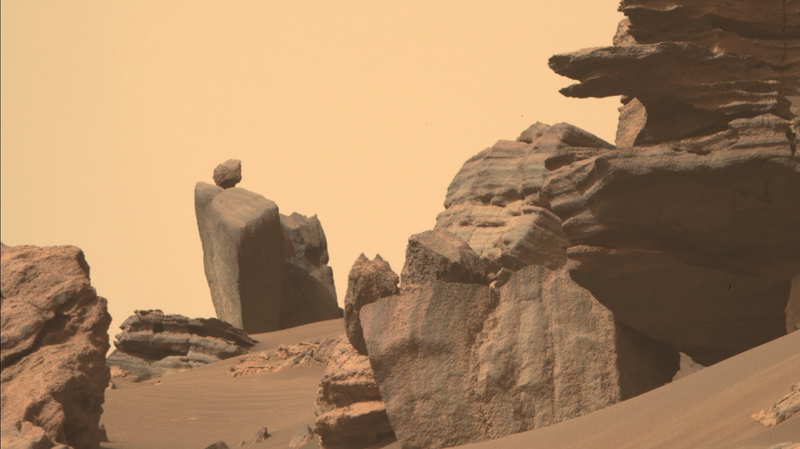
The Red Planet is desolate, freezing, and has an atmosphere 1% as dense as our own. Its winds blow in great gusts that kick up global dust storms that make and break Mars missions that rely on solar energy for power.
Thankfully, spacecraft on and above Mars keep us Earthlings up-to-date on the Martian weather and the best sightseeing of Martian wanderlust. Whether through the zoomed-in oculus of Perseverance’s WATSON camera or the all-seeing eye of the Mars Reconnaissance Orbiter, these are the best images from Mars released this year.
Read more
Canyon system from above
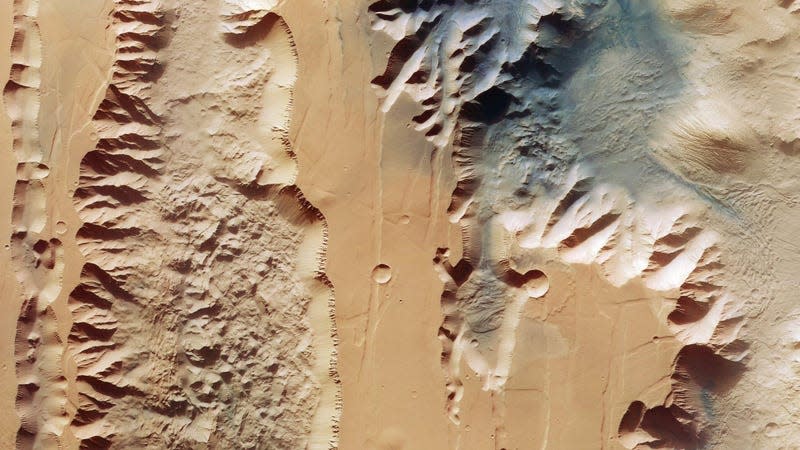
Ius and Tithonium Chasmata on Mars.
The Mars Express Orbiter snapped images of the Valles Marineris, a canyon system about 10 times longer, 20 times wider, and five times deeper than Earth’s Grand Canyon. It’s hard to fathom the scale of such a structure, but the image—taken from miles above the Martian surface—shows that the planet’s exterior is much more topographically dynamic than some rover images would leave you to believe. It’s all about perspective.
Martian clouds look like Earth clouds
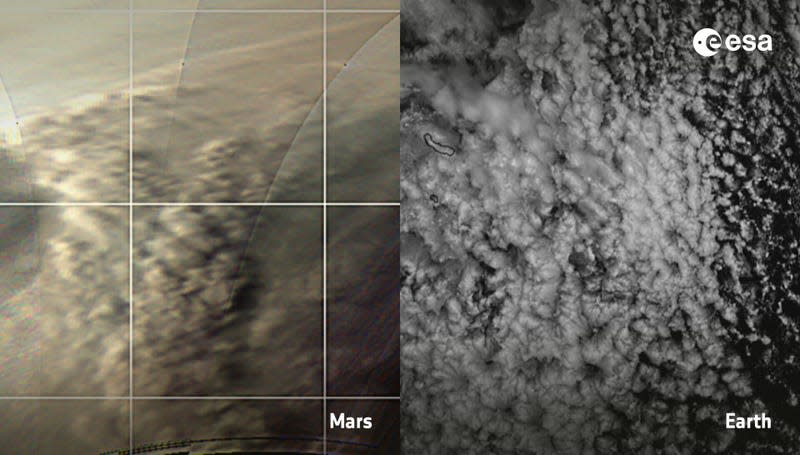
Two cameras aboard the Mars Express orbiter captured images of Martian dust storms that kicked up around the planet’s North Pole. Interestingly, the images seemed to show Martian clouds similar in structure to Earth’s clouds. It’s another reminder that despite the many differences between the two planets, they have their similarities.
A precariously balanced rock
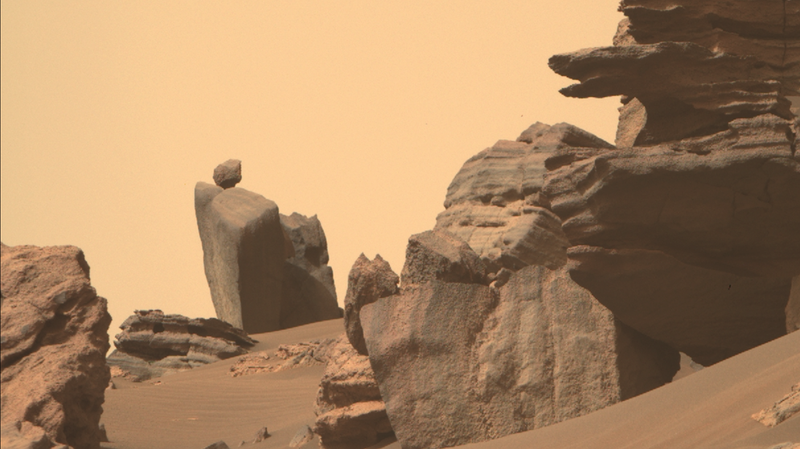
A balancing rock spotted by Perseverance.
“Okay,” you might say, “this one has got to be aliens.” But it’s not! A rock spotted by Perseverance in June could be seen very delicately situated on a large rock jutting out of the ground. The rock appears to be a precariously balanced rock (or a PBR), a technical term for a rock formation that also crops up on Earth.
The Webb Space Telescope’s first shot of Mars
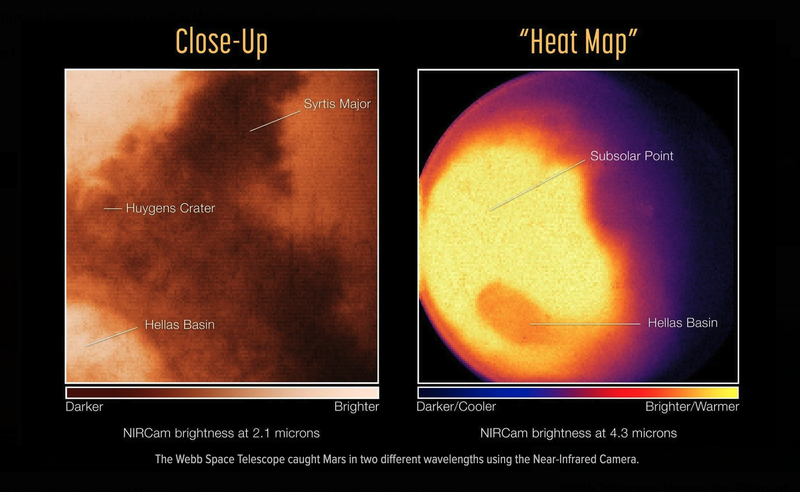
The Webb Space Telescope got local in September when it imaged Mars with its Near-infrared camera (NIRCam). The cutting-edge space observatory snapped features on the Red Planet’s surface—namely the Huygens Crater, Hellas Basin, and Syrtis Major, a dark spot that separates the planet’s northern lowlands from its southern highlands. The telescope also took spectroscopic data from the Martian atmosphere, revealing some specifics about its molecular composition.
The infamous Martian doorway
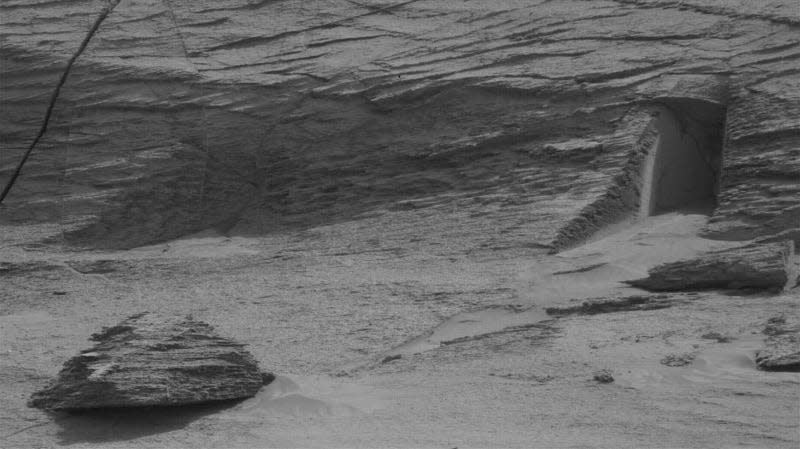
According to NASA, this rock formation is not an alien doorway.
In May, the Curiosity rover (bless its industrious robot heart) imaged a peculiar rock formation on Mars’ Mount Sharp that just about everyone agrees looks like an alien doorway. (Alien in the sense that it’s on Mars, as who knows what alien doors actually look like). Of course, NASA has dismissed the internet theory. Apparently, the feature is only a foot tall, and is a split between two fractures of a rock. We see what we want to see, especially on the Red Planet.
A meteorite impact site
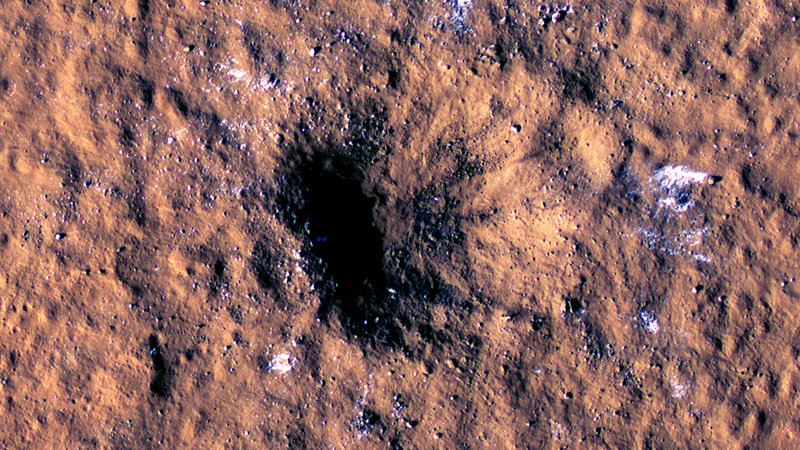
On Christmas Eve 2021, a meteorite impacted on Mars. The impact was felt by the InSight lander, which normally detects seismic waves from Marsquakes. In 2022, the HiRISE camera aboard the Mars Reconnaissance Orbiter imaged the impact site. It revealed ice kicked up by the space rock’s impact, with a big black splotch the blaring indicator of the rock’s presence.
Before (and after) the meteorite strike
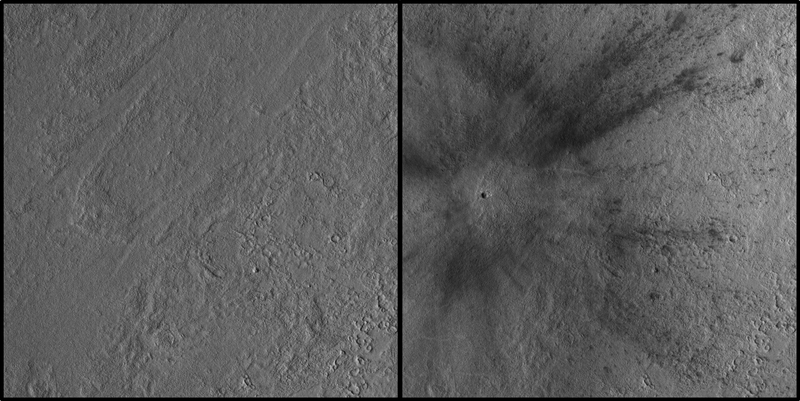
The Context Camera, also aboard MRO, imaged the site both before and after the impact. The rock landed in Amazonis Planitia, a region that looks relatively plain in the before times—and quite interesting in the aftermath. A black dot is the noticeable impact site of the meteorite, and a debris field clearly spreads outwards from where the rock crash-landed.
A tangle of Martian trash
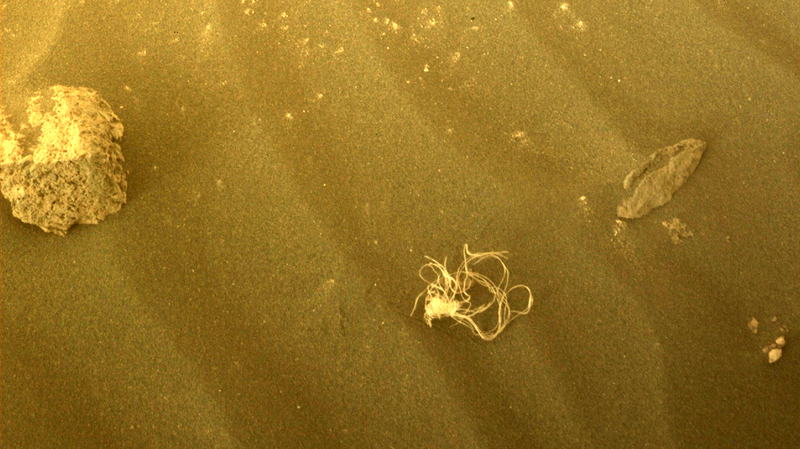
Human trash on Mars, or the progeny of the Flying Spaghetti Monster?
What in the fresh Martian hell is this? Alien litter? In July, Perseverance’s hazard avoidance camera imaged a tangle of string that NASA officials confirmed was debris from the rover mission—though they weren’t exactly sure what. Gizmodo commenters suggested the stringy detritus might be connected to the Flying Spaghetti Monster. Unfortunately, it’s more likely a reminder that even noble pursuits like space exploration have consequences like interplanetary pollution.
More Martian trash
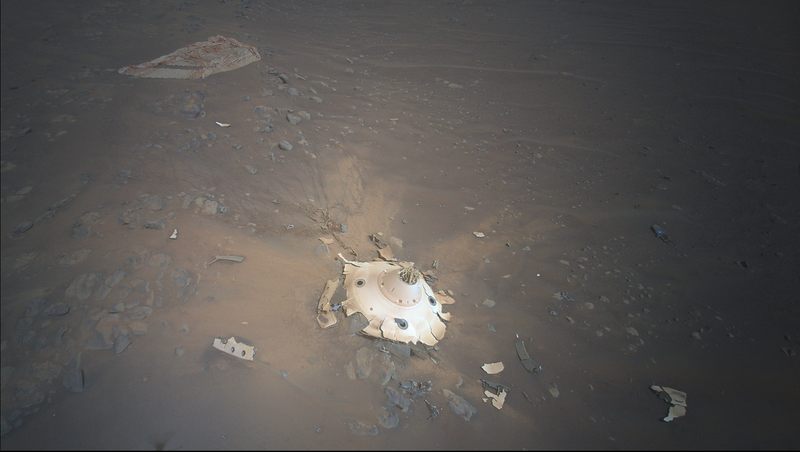
Perseverance’s shattered backshell and crumpled parachute.
The Ingenuity helicopter snapped an image of some of the backshell and crumpled parachute from the Perseverance rover’s successful landing on Mars. The rover landed in February 2021, and the jettisoned material was spotted this April. The image is pretty sharp—a welcome change from some of the older shots from the Red Planet.
InSight on marsquake day
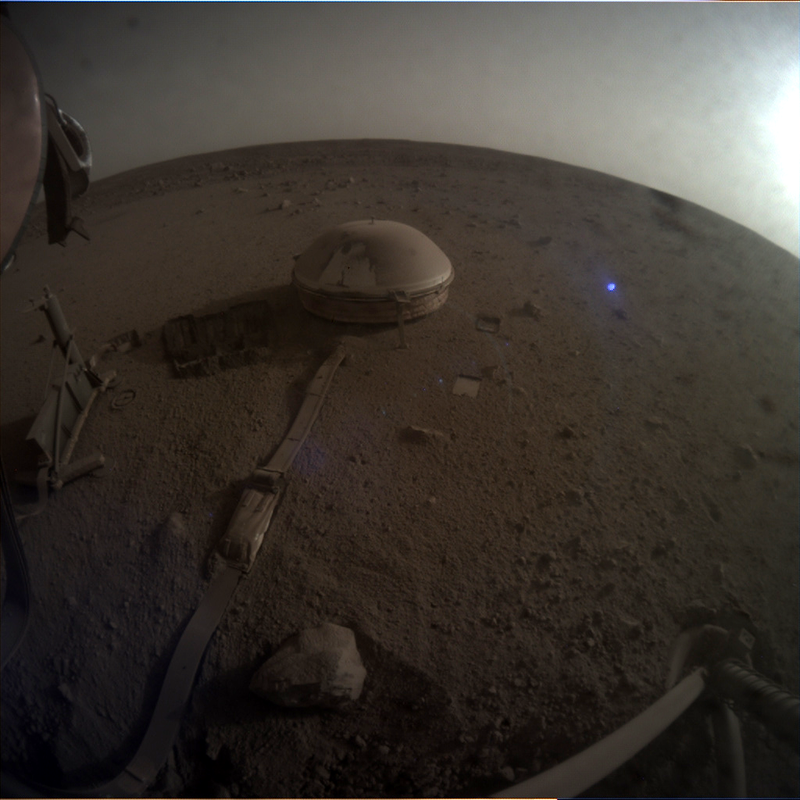
InSight’s seismometer on May 4, 2022.
This image was snapped by the InSight lander on May 4, the day its seismometer (covered in dust in this image) detected one of the largest Marsquakes ever detected on the planet. The Marsquake had a magnitude of 5.0—on Earth, that equates to an earthquake one can feel but only causes minor damage.
Curiosity’s curiously flaky rocks
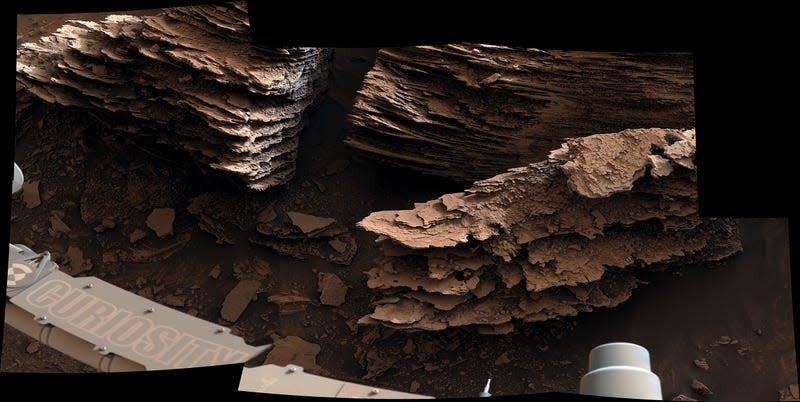
Flaky rocks seen by Curiosity in June 2022.
The Curiosity rover spotted flaky rocks as it traversed Mars’ Mount Sharp. Scientists know that liquid water once existed on Mars, and scientists think these flaky rocks indicate where streams of water flowed through sand dunes.
InSight’s last selfie
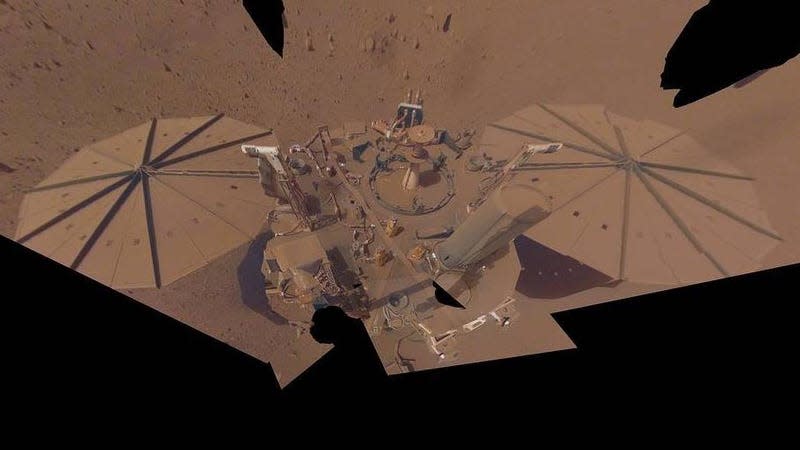
InSight’s final selfie, snapped in April 2022.
The InSight lander’s final selfie was a sight to behold, in no small part because it shows exactly why it’s the lander’s final selfie. InSight is being suffocated by Martian dust that is sticking to its solar panels, meaning the lander cannot get enough power to persist. The InSight team has stopped using the lander’s camera to prolong its scientific operations, leaving us with this final sight of InSight, which is expected to die in the next few months.
More from Gizmodo
Sign up for Gizmodo's Newsletter. For the latest news, Facebook, Twitter and Instagram.

